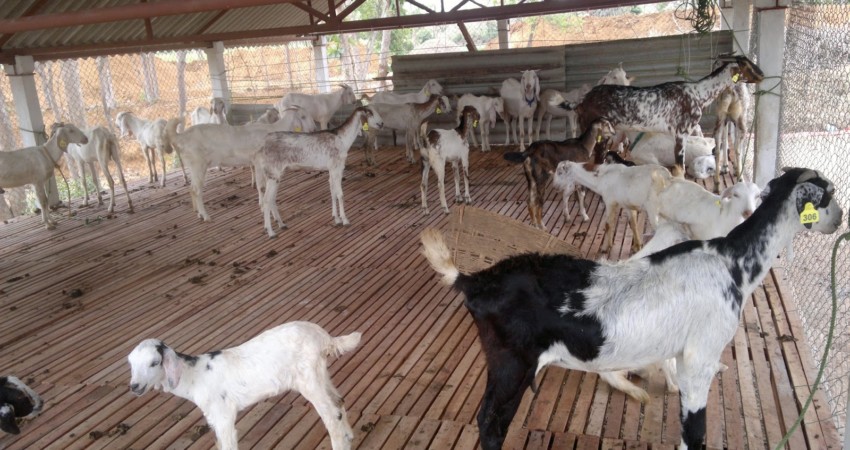

Coccidiosis is caused by microscopic protozoan parasites called coccidian (Eimeria spp.). Coccidia go through a complex “life cycle” in the intestinal cells of goats. In the process, they produce large numbers of eggs (technically called oocysts) that are passed in the feces. In the process of growth and multiplication in the goat intestinal epithelial cells, the coccidia may destroy many intestinal cells. This may cause diarrhea and other signs of the disease coccidiosis.
Coccidiosis is the most common cause of diarrhea in goats between 3 weeks and 5 months of age. This is especially true when goats are housed in confinement. Coccidiosis commonly strikes young goats shortly after weaning because of the stress of being suddenly separated from their dam.
Nearly all (or most) adult goats carry coccidia in their intestines. The very small eggs or oocysts passed in the feces of adult goats hatch in the environment and goats pick up the infective stages of the coccidian either directly from the manure or in contaminated feed and water. When present in small numbers, coccidia normally are not a problem.
The signs of coccidiosis are divided into two categories: subclinical and clinical.
Subclinical cases result in a decrease in feed intake and weight gain, and are difficult to detect because of the absence of diarrhea. Clinical cases can vary from some loss of appetite and decrease in weight gain and slight, short lived diarrhea to severe cases involving great amounts of diarrhea, fluid feces containing mucus and blood, persistent straining in attempt to pass feces, loss of weight, rough hair coat, dehydration, and in some cases death in as short as 24 hours. The primary pathology associated with coccidiosis involves intestinal cell destruction. Scarring and damage to the lining of the intestines following treatment or recovery may result in permanently unthrifty and stunted goats because the ability of these goats to absorb food is impaired.
Good husbandry practices are the best preventive measures against coccidiosis. Regular removal of manure and wasted feed, not feeding on the ground, designing feeders and water systems that minimize fecal contamination, providing a clean source of water, cleaning water tanks and feeders regularly, making sure that watering systems do not leak and that sufficient sunlight enters buildings are examples of such husbandry practices. If goats are kept on solid floors during the winter, maintaining clean and dry bedding is important.
On farms where coccidiosis problems keep recurring, it may be advisable to treat the herd preventively.
When goats come down with the signs of coccidiosis:
Drenching them orally with amprolium (Corid® – 9.6%) for 5 consecutive days. This is often considered an effective form of treatment. This is an extra-label use, as amprolium is not labeled for goats, and a veterinarian needs to prescribe its use.
Sulfa drugs (sulfadimethoxine-sulfamethazine) such as Albon® and Sulmet® are most effective in the early stages of acute infections when coccidia are multiplying rapidly. Sulfa drugs may not cure coccidiosis but are often given to infected goats to prevent secondary infections such as bacterial enteritis.
 Contact Jaguza Support
Contact Jaguza Support